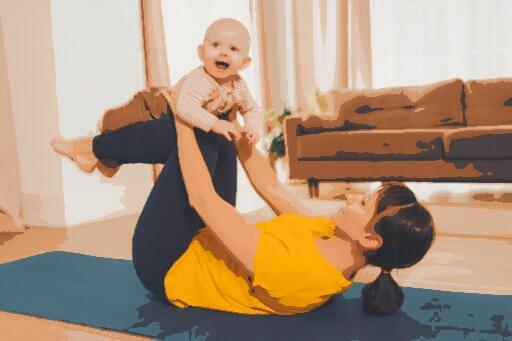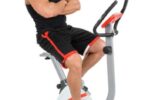If you have recently given birth, you might wonder how to get back in shape and feel good about your body. You might also be experiencing some discomfort or pain in your lower back, pelvic floor, or abdomen. You are not alone. Many new moms face these challenges after childbirth.
One of the best ways to address these issues is to practice postnatal pilates and postpartum pilates. These are forms of exercise that focus on strengthening your core muscles, improving your posture, and enhancing your flexibility. They can also help you relax, reduce stress, and boost your mood.
But what exactly are postnatal Pilates and postpartum Pilates ? How are they different from regular pilates? And how can you start doing them? In this article, we will answer these questions and more. We will also share some tips and benefits of doing postnatal pilates and postpartum pilates.
What are Postnatal Pilates and Postpartum Pilates ?
Postnatal pilates and postpartum pilates are adaptations of the original pilates method, which was developed by Joseph Pilates in the early 20th century. Pilates is a system of exercises using controlled movements, breathing, and mental focus to improve physical and psychological health.
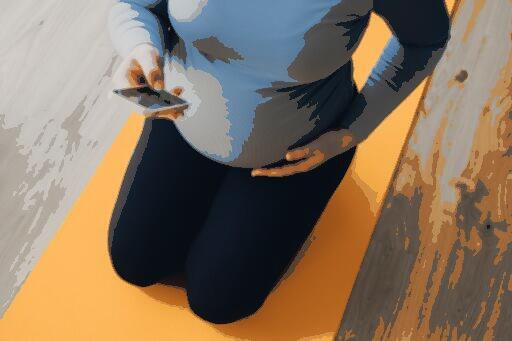
Postnatal pilates and postpartum pilates are explicitly designed for women who have given birth, whether vaginally or by cesarean section. They take into account the changes that occur in your body during pregnancy and after delivery, such as:
- The stretching and weakening of your abdominal muscles, especially the rectus abdominis (the six-pack muscle) and the transverse abdominis (the deep core muscle)
- The loosening and widening of your pelvic floor muscles, which support your bladder, uterus, and rectum
- The shifting and misalignment of your spine, pelvis, and hips which can cause lower back pain, sciatica, or pelvic girdle pain
- The hormonal changes that affect your joints, ligaments, and tendons, making them more prone to injury
- The increased blood volume and fluid retention which can cause swelling, inflammation, or varicose veins
- The emotional stress and fatigue that come with caring for a newborn baby
Postnatal pilates and postpartum pilates aim to address these issues by:
- Strengthening your core muscles, especially the transverse abdominis, which acts as a natural corset for your spine and organs
- Restoring your pelvic floor muscles which can prevent or treat urinary incontinence, pelvic organ prolapse, or sexual dysfunction
- Realigning your spine, pelvis, and hips, which can improve your posture, balance, and mobility
- Stretching and mobilizing your joints, ligaments, and tendons which can relieve tension, stiffness, or pain
- Improving your blood circulation and lymphatic drainage, which can reduce swelling, inflammation, or varicose veins
- Enhancing your breathing and relaxation which can calm your nervous system, lower your blood pressure, and elevate your mood
How are Postnatal Pilates and Postpartum Pilates Different from Regular Pilates ?
Postnatal Pilates and postpartum Pilates are different from regular Pilates in several ways. They are:
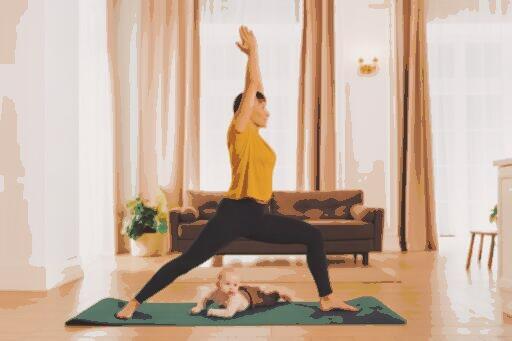
- More gentle and gradual, starting with simple and easy exercises and progressing to more challenging ones as you recover and gain strength
- More focused on your core and pelvic floor muscles, avoiding activities that put too much pressure or strain on these areas, such as crunches, planks, or twists
- More mindful and aware, paying attention to your body’s signals and sensations, and modifying or stopping any exercise that causes pain or discomfort
- More supportive and safe, using props such as pillows, blankets, balls, or bands to assist or modify your movements and avoiding positions that can cause dizziness, nausea, or bleeding, such as lying on your back or standing up quickly
How Can You Start Doing Postnatal Pilates and Postpartum Pilates ?
Before you start doing postnatal pilates and postpartum pilates, you should consult your doctor or midwife and get their clearance. The general recommendation is to wait at least six weeks after a vaginal delivery and eight weeks after a cesarean section, but this may vary depending on your individual situation and recovery.
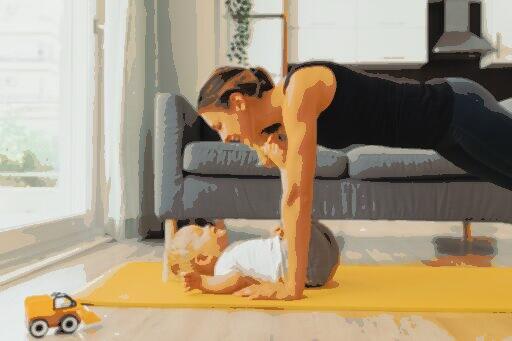
Once you get the green light, you can start doing postnatal pilates and postpartum pilates at home or in a studio. You can follow online videos, books, or apps or join a class or session with a certified instructor. You can do them alone, with a friend, partner, or baby.
The most important thing is to listen to your body and go at your own pace. Start with 10 to 15 minutes of exercise two to three times a week, and gradually increase the duration, frequency, and intensity as you feel comfortable and confident. You should also warm up before and cool down after each session and drink plenty of water to stay hydrated.
Some of the best exercises to start with are:
- Pelvic tilts: Lie on your back with your knees bent and your feet flat on the floor. Inhale and relax your pelvis. Exhale and gently tilt your pelvis, flattening your lower back against the floor. Hold for a few seconds, then inhale and return to the starting position. Repeat 10 to 15 times.
- Heel slides: Lie on your back with your knees bent and your feet flat on the floor. Inhale and relax your pelvis. Exhale and slowly slide one heel away, keeping your leg straight. Inhale and slide it back to the starting position. Repeat with the other leg. Alternate 10 to 15 times on each side.
- Knee folds: Lie on your back with your knees bent and your feet flat on the floor. Inhale and relax your pelvis. Exhale and lift one foot off the floor, bringing your knee towards your chest. Inhale and lower it back to the starting position. Repeat with the other leg. Alternate 10 to 15 times on each side.
- Cat-cow: Get on your hands and knees, with your wrists under your shoulders and your knees under your hips. Inhale and arch your back, lifting your head and tailbone. Exhale and round your back, tucking your chin and tailbone. Repeat 10 to 15 times.
- Child’s pose: Get on your hands and knees, with your wrists under your shoulders and your knees under your hips. Sit back on your heels and stretch your arms forward on the floor. Rest your forehead on the floor or a pillow. Breathe deeply and relax. Hold for 30 to 60 seconds.
What are the Benefits of Doing Postnatal Pilates and Postpartum Pilates ?
Doing postnatal pilates and postpartum pilates can have many benefits for your physical and mental health. Some of the benefits are:
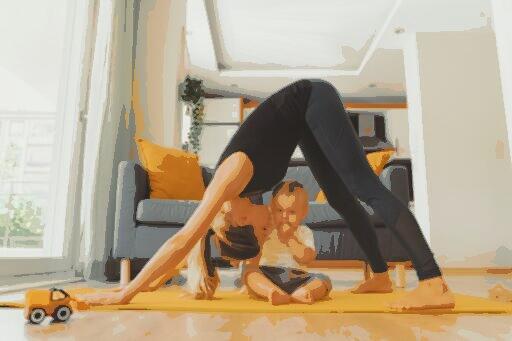
- You can regain your pre-pregnancy shape and weight faster and easier
- You can improve your core strength and stability, which can prevent or reduce lower back pain, pelvic girdle pain, or diastasis recti (separation of the abdominal muscles)
- You can restore your pelvic floor function, which can prevent or treat urinary incontinence, pelvic organ prolapse, or sexual dysfunction
- You can improve your posture and alignment, which can prevent or correct muscle imbalances, joint problems, or injuries
- You can increase your flexibility and mobility, which can improve your range of motion, coordination, and agility
- You can enhance your breathing and relaxation, which can lower your stress levels, improve your sleep quality, and boost your mood and energy
- You can bond with your baby, partner, or friend if you do the exercises with them
- You can have fun and enjoy yourself, as pilates is a fun and enjoyable form of exercise
Conclusion
Postnatal Pilates and postpartum Pilates are great ways to get back in shape and feel good about your body after giving birth. They can help you strengthen your core and pelvic floor muscles, improve your posture and flexibility, and relax and de-stress. They can also be done at home or in a studio, alone or with a companion, and at your own pace and level.
If you are interested in trying postnatal pilates and postpartum pilates, make sure to consult your doctor or midwife first and follow the guidelines and tips we shared in this article. You will soon see and feel the difference in your body and mind.
We hope you enjoyed this article and learned something new. If you did, please share it with your friends and family, and leave us a comment below. We would love to hear from you.
And if you want to learn more about pilates, health, fitness, or wellness, please visit our website or follow us on social media. We have more articles, videos, and resources for you.
Thank you for reading, and have a wonderful day.

